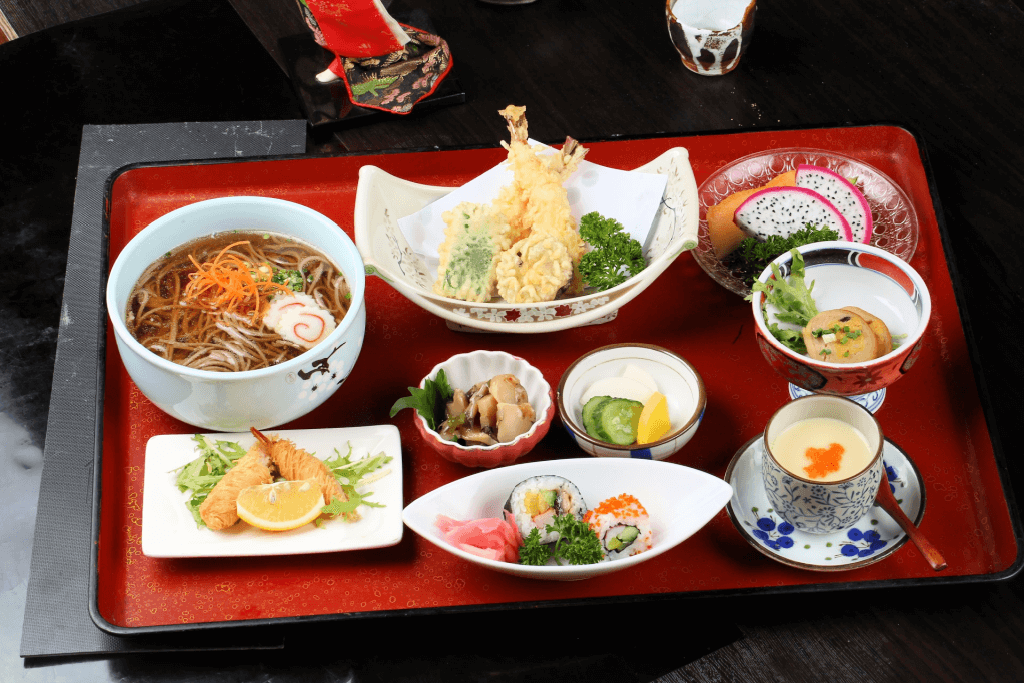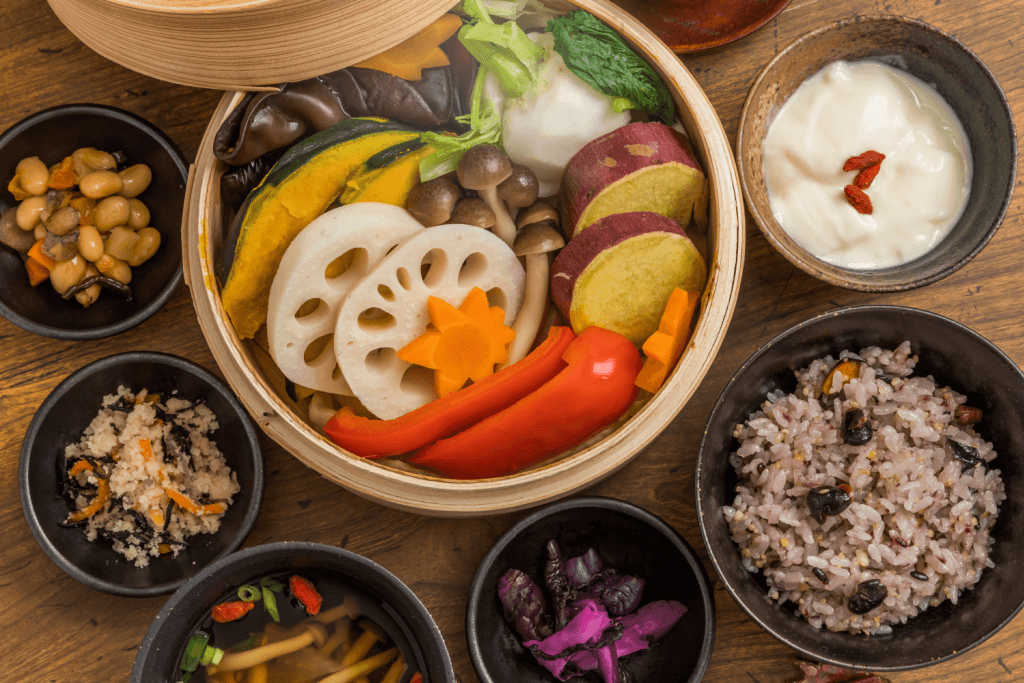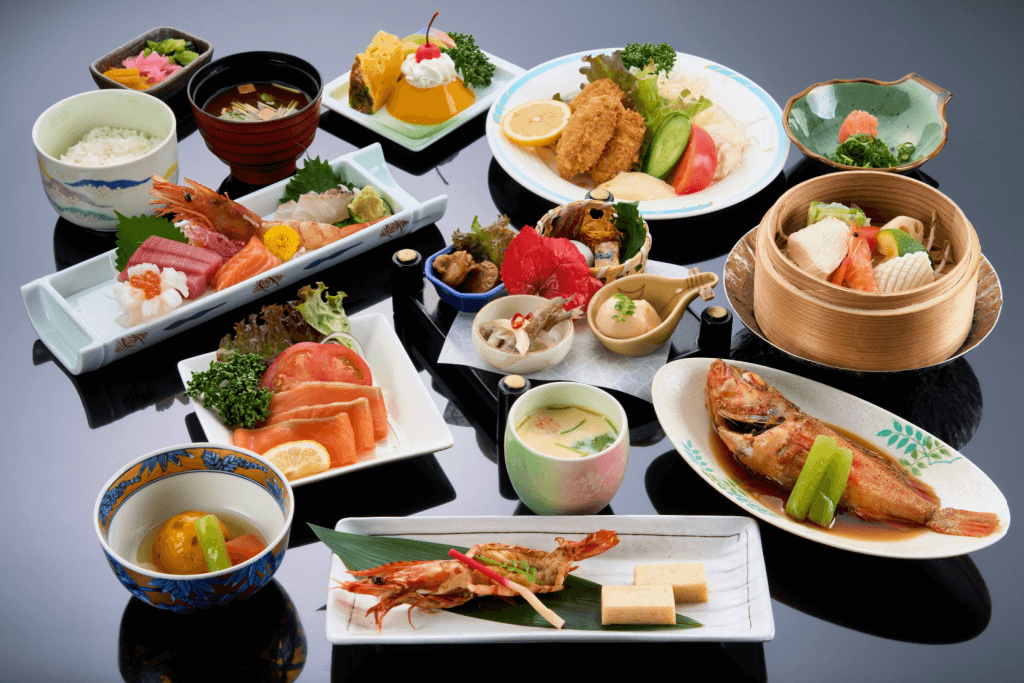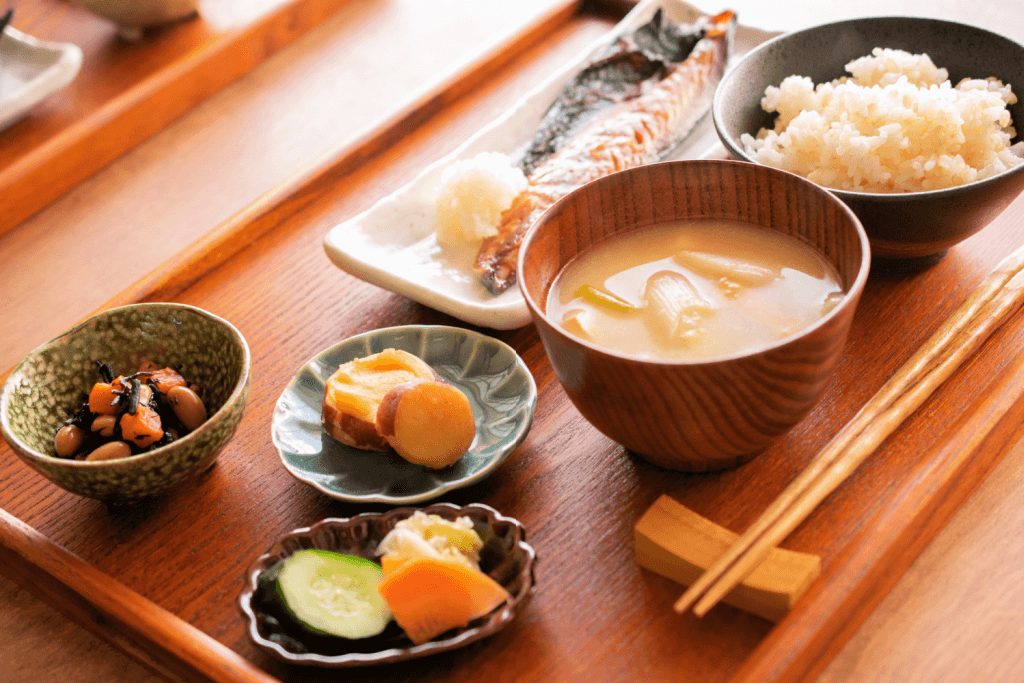Banquet Meals in Japan: A Unique Twist on Kaiseki Ryori
James Lau
Posted on August 25, 2023
Share:

Kaiseki ryori, a traditional Japanese culinary art form, has interested gourmands worldwide with its delicious flavors and artistic presentation. With centuries of history and cultural heritage, these banquet meals offer a unique dining experience that celebrates seasonal ingredients and the harmony of flavors.
Why are Japanese banquet meals also called “kaiseki ryori”?
Yes, you read them right. In English, both versions of kaiseki ryori (会席料理) (懐石料理) have the same pronunciation. Confused? You’re not alone. Considered the same, the two terms have some subtle differences! Both traditional multi-course dining experiences focus on seasonal ingredients and presentation, but their historical origins and the number of dishes served differentiate them.

Kaiseki ryori’s (会席料理) history starts from the Heian period, where it originated from the imperial court’s banquets. It’s famous for its wide variety of dishes and pairs well with alcohol, especially sake. Additionally, it showcases a range of dishes like sashimi, grilled food, and especially simmered vegetables.
On the other hand, the haute cuisine kaiseki ryori (懐石料理), also known as cha-kaiseki, has its origins in the Zen Buddhist tea ceremony. It is more essential and minimalist, typically featuring a simple and focused sequence of courses. Kaiseki ryori has a broader range of dishes, reflecting its historical association with large banquets. At the same time, cha-kaiseki ryori emphasizes simplicity and tranquility, in line with the tea ceremony’s spirit.
History of Kaiseki Ryori
As mentioned, kaiseki ryori traces its origins back to the Heian period (794 CE-1185) in Japan, where the imperial court hosted banquets featuring various dishes. These banquets were the foundation for kaiseki ryori, presenting various food, sometimes up to 28 different kinds. The dishes were categorized into dried, fresh, and fermented food and desserts, each carefully prepared with seasonally available ingredients.
During the Kansei era (1789-1801), banquet meals included alcohol and appetizers. By the Meiji era (1868-1912), kaiseki ryori established its unique structure with pickled vegetables and rice served at the end. This tradition has continued in most kaiseki restaurants.

Kaiseki ryori and honzen cuisine also share deep historical connections in Japan’s culinary heritage. Honzen cuisine, an earlier formal dining style of the imperial court, can be considered an ancestor of kaiseki ryori. Honzen cuisine, meaning “main meal,” featured beautifully arranged dishes served in a strict order with seasonal ingredients.
As time passed, it simplified into kaiseki ryori, gaining popularity among samurai and the public. Kaiseki uses Honzen’s focus on seasonal ingredients and artistic presentation but allows chefs to showcase creativity. Honzen cuisine remains rigid and standardized, while kaiseki embodies food artistry and cultural heritage. Today, it is most common at traditional Japanese weddings.
Are you interested in enjoying even more artisanal Japanese delights? Check out Sakuraco! Sakuraco sends traditional Japanese sweets, snacks, and tableware from across Japan to your door so that you can enjoy the experience!
The Art of Balance and Harmony
At the core of kaiseki ryori lies ichiju sansai, meaning “one soup, three sides.” This simple principle is the heart of the multi-course meal. A delicate soup (Ichiju) always comes with three side dishes (sansai): fresh, raw, simmered, and grilled. Ichiju sansai celebrates the simplicity of natural flavors, making kaiseki ryori a journey of taste and beauty, where each dish pairs with the others for a smooth experience.

Ichiju sansai embodies the concept of washoku (traditional Japanese cuisine), highlighting the importance of balance and harmony in a meal. Each dish plays a specific role in the dining experience, providing a variety of tastes, textures, and visuals. The dishes reflect the delicate balance between colors, shapes, and serving plates, enhancing the beautiful presentation.
With ichiju sansai in mind, chefs respect nature’s bounty and the changing seasons, carefully selecting ingredients to match the time of year. Seasonal ingredients enhance the dishes’ flavors and reflect the connection between the dining experience and nature.
The Order of Meals
In kaiseki ryori, the dishes come in a carefully crafted order, each contributing to the best dining experience for the diner. The meal commences with sakizuke, an appetizer that sets the tone for the culinary journey ahead. Afterward, wanmono, a delicate clear soup, cleanses the palate and prepares diners for the main courses. The adventure continues with mukozuke, using fresh sashimi or raw fish to offer a taste of the sea.

Hachizakana steps in with its grilled treats, charming the diner with the rich aroma of perfectly cooked fish or meat. Then, shiizakana appears, offering a variety of strong-flavored dishes that surprise and delight, often accompanied by sake. As the feast ends, oshokuji arrives in rice accompanied by konomono or pickled treats and the last soup of the course, usually miso. Concluding the meal is the mizugashi, a sweet finale, completing the multi-course masterpiece of kaiseki ryori.
Rice, pickled vegetables, and miso soup are served together. There may also be fried food, steamed dishes, hot pots, sake, or green tea. However, hojicha (roasted green tea) and coffee have recently become common. Meals may also include Western fare, such as stew and desserts. Moreover, they may replace rice with soba and udon. It’s important to note that the menu sequence can vary and is sometimes more relaxed by the order described above.
Why do people like Japanese banquet meals?
Japanese banquet meals are an attractive culinary art form that celebrates the country’s rich history and the beauty of seasonal ingredients. From its origins in the grand banquets of the Heian period to its refined and artistic presentation today, kaiseki ryori has become a satisfying dining experience.
This food journey promises to delight enthusiasts worldwide, offering a cultural celebration that combines nature, tradition, and excellence in a symphony of taste and visual appeal. If you seek a sophisticated dining experience, kaiseki ryori invites you to savor the art of Japanese cuisine! Have you ever tried Japanese banquet meals before? When did you try it? Let us know in the comments below!

Discover authentic flavors with Sakuraco
Get Sakuraco 

Discover authentic flavors with Sakuraco
Get Sakuraco 
Related Articles

Mochi: How is Mochitsuki Made in Japan?
Mochitsuki is the Japanese tradition of pounding steamed rice to make mochi for the New Year. Families and neighbors gather to participate in this lively and meaningful tradition. The teamwork involved helps everyone feel a sense of connection.

Konpeito Candy: What Makes This Starry Treat Shine?
If you are a fan of the famous Demon Slayer series, then you probably know that the favorite treat of the adorable Nezuko Kamado is those tiny, colorful little sweets.

Kinako: The Amazing Roasted Soybean Powder!
Kinako is a very popular ingredient that can easily be found in many traditional Japanese sweets. It has a distinctive flavor, standing alongside other classic tastes such as red bean or sesame. Let’s explore this charming ingredient together, and who knows, you might even be able to make it in your own beloved kitchen!

Aaron and Claire Make the Ultimate Japanese Pork Belly: Buta no Kakuni
If you want a Japanese dish that’s rich, tender, and simple to follow, Aaron and Claire show exactly how to make it in this episode. Aaron prepares Buta no Kakuni, a classic braised pork belly dish renowned for its rich flavor and tender texture.



